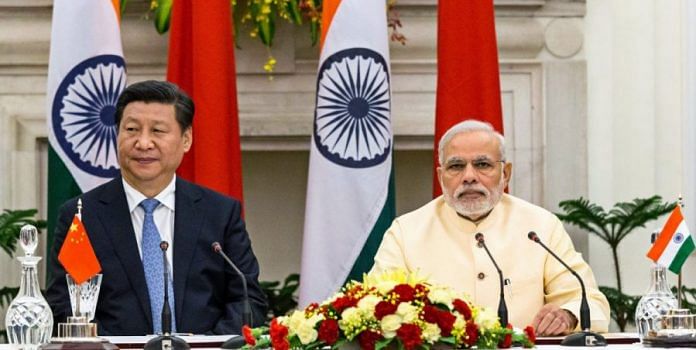Thank you dear subscribers, we are overwhelmed with your response.
Your Turn is a unique section from ThePrint featuring points of view from its subscribers. If you are a subscriber, have a point of view, please send it to us. If not, do subscribe here: https://theprint.in/subscribe/
South Asia is entering a period of dislocation that is deeper and more uncertain than anything seen in the past. Domestic turbulence, economic strain, and the growing footprint of external powers have reshaped the region’s political alignments and diplomatic instincts.
At the centre of this shifting landscape stands India, whose “Neighbourhood First” policy, introduced with confidence a decade ago, now faces its most serious credibility test. The question is no longer whether India is the region’s natural anchor, but whether it can still act as one in a neighbourhood that has become more fragmented, more transactional, and far more contested.
A Region in Flux
The original premise of “Neighbourhood First” rested on the assumption that South Asia’s politics, though volatile, remained broadly navigable for New Delhi, through a combination of economic cooperation, security partnerships, and steady diplomatic engagement. That assumption no longer holds.
Bangladesh is undergoing profound political polarisation, where India’s perceived tilt towards Sheikh Hasina has become an emotive domestic issue. In Sri Lanka, the post-bankruptcy realignment has drawn Colombo deeper into a multi-vector foreign policy, inviting Chinese, Middle Eastern, and even Russian interests into what was once a bilateral buffer between Delhi and Beijing.
Nepal’s revolving-door coalitions have injected chronic unpredictability into its foreign policy, with each reshuffle prompting recalibrations in attitude towards India and China. Pakistan, locked in a cycle of military-dominated governance and economic fragility, offers no strategic stability. And in the Maldives, President Muizzu has used anti-India rhetoric as a political instrument, turning the Indian Ocean into an arena for symbolic pushback and great-power signalling.
South Asia, today, is a region where each neighbour is simultaneously weaker at home yet more assertive abroad.
The Credibility Problem
India’s challenge is not the absence of engagement. It is the gap between intent and impact. New Delhi’s regional diplomacy remains active, but its outcomes increasingly bump up against three structural credibility constraints.
First, India has a delivery deficit. Its commitments, whether in energy cooperation, infrastructure projects, or credit lines, are often judged not by scale but by speed. China’s ability to move rapidly, regardless of long-term sustainability, has created expectations India struggles to match. Even well-intentioned Indian assistance can feel slow, procedural, or uneven.
Second, India’s political signalling has been uneven. By tying itself too visibly to specific leaders or coalitions, India has accumulated political resentment among oppositions who view New Delhi as an intrusive actor, not a neutral partner. These perceptions persist.
Third, domestic political narratives spill over into regional diplomacy. Issues such as migration, river-water sharing, and border management become part of India’s internal political contestation in ways that constrain diplomatic flexibility and complicate negotiations with neighbours.
The cumulative effect is clear: India is seen as indispensable but not always reliable.
Rebuilding Trust Before Influence
For “Neighbourhood First” to regain traction, India must resist the temptation to respond with muscularity. What the region needs is credibility, consistent, predictable, and politically neutral engagement.
Three shifts are essential:
One, India must return to quiet, discreet diplomacy. South Asia is acutely sensitive to public signalling. Policies that are announced with flourish but implemented slowly invite criticism, while overt support for incumbents erodes goodwill with oppositions. India’s diplomatic strength historically lay in its ability to engage continuously.
Two, India must shift from “promising big” to “delivering reliably.” Completing long-pending hydropower projects in Nepal, accelerating connectivity corridors with Bangladesh, operationalising energy-sharing frameworks with Sri Lanka, and scaling cross-border digital platforms would demonstrate seriousness more clearly.
Three, India must depersonalise its neighbourhood policy. South Asian politics are cyclical; today’s ally is tomorrow’s critic. India cannot afford a model where its diplomatic equities rise and fall based on the fortunes of individual leaders. Institutional relationships, not personalised ones, must form the core of India’s neighbourhood engagement.
Beyond these, India must widen its portfolio of regional public goods. Disaster-response partnerships, climate-resilient infrastructure, interoperable digital services, and fast-credit mechanisms can create a reputation for reliability that competitors find difficult to replicate.
A Strategic Test India Cannot Ignore
The coming decade will determine whether India retains primacy in a region where everyone from China to the UAE to Turkey sees opportunity. “Neighbourhood First” was always meant to reflect proximity and responsibility. Today, it must also reflect credibility.
South Asia’s fragmentation is not of India’s making, but India must decide how it responds. If New Delhi can deliver consistently, signal impartially, and engage patiently, it can rebuild trust even in an unsettled neighbourhood. If not, it risks ceding ground in a region where it has the most at stake.
India cannot stabilise South Asia alone. But it can choose whether its neighbourhood sees it as a partner to rely on or an actor to hedge against.
That choice will define the future of “Neighbourhood First.”
These pieces are being published as they have been received – they have not been edited/fact-checked by ThePrint.


